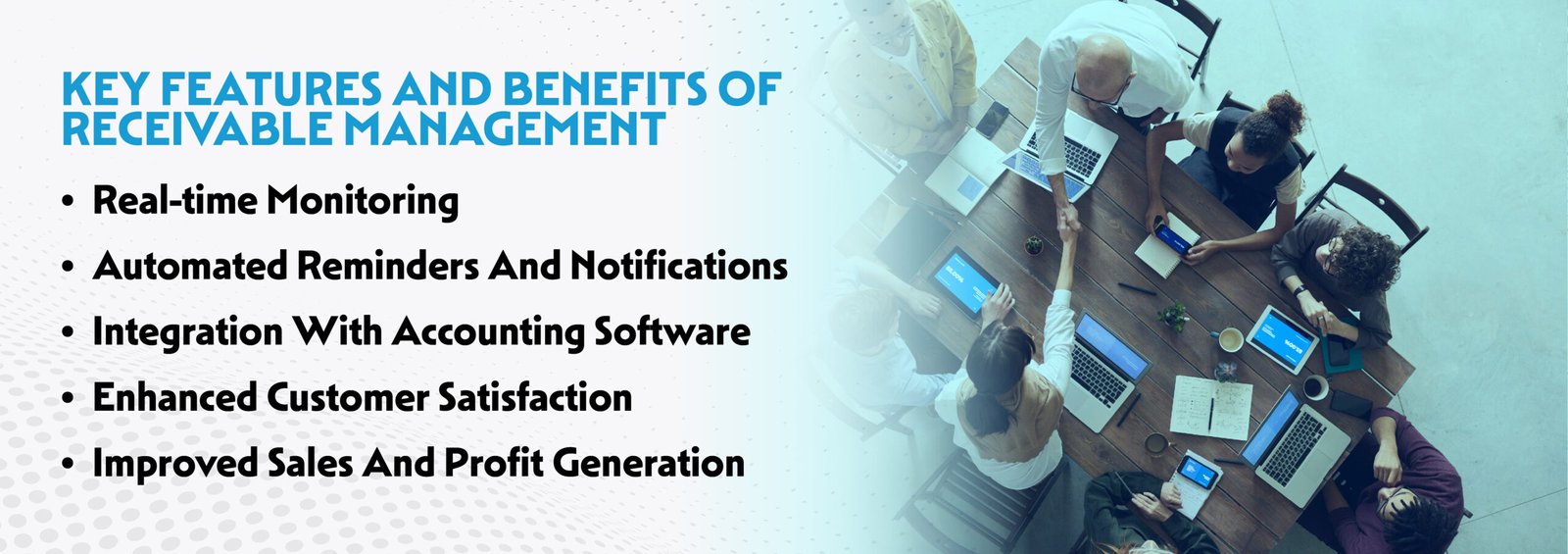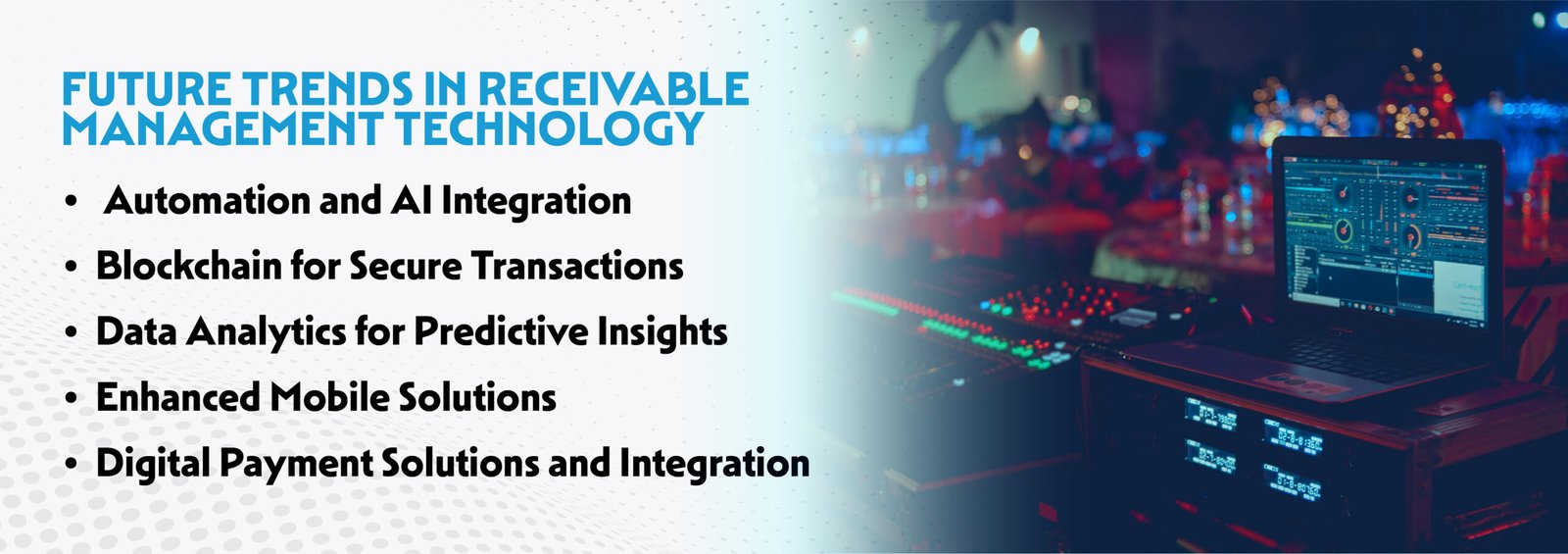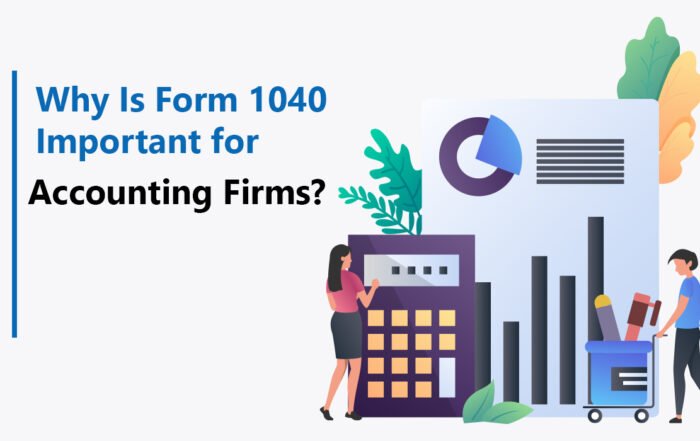In the ever-evolving landscape of business, the effective management of receivable management services is paramount for sustaining financial stability and fostering growth. Companies, cognizant of this fact, are increasingly turning to advanced technologies to streamline and enhance their receivable management services. In this comprehensive exploration, we will delve into the pivotal role technology plays in modern receivable management, placing a significant focus on keyword integration to underscore its importance.
Understanding Receivable Management Services
Receivable management services encompass a diverse array of practices aimed at optimizing the process of collecting payments owed to a business. This includes the meticulous management of accounts receivable, the implementation of efficient systems, and collaborative efforts with receivable management partners.
The Dynamics of Accounts Receivable Management
Definition and Importance
Accounts receivable management services involve overseeing the funds owed by customers or clients to a business. This aspect is fundamental to maintaining a healthy cash flow, ensuring timely payments, and minimizing financial risks.
Streamlining Processes with Technology
- Automated Invoicing Systems:
Leveraging automated invoicing systems not only minimizes errors but also accelerates the invoicing process, ensuring prompt delivery to clients. This technological leap enhances overall efficiency in managing receivable management services. - Digital Payment Solutions:
The advent of digital payment solutions has revolutionized how businesses receive payments. Secure and convenient options encourage timely settlements, contributing to the seamless operation of receivable management services.
Receivable Management Systems: A Technological Marvel
Definition and Components
Receivable management systems, often hailed as technological marvels, refer to the integrated technologies that businesses use to handle their receivables effectively. These systems employ a variety of tools to automate, monitor, and analyze receivable management services processes.
Key Features and Benefits Receivable Management

- Real-time Monitoring
Receivable management systems offer real-time insights into outstanding invoices, payment statuses, and other critical metrics. This empowers businesses to make informed decisions promptly. - Automated Reminders and Notifications
Automated reminders for upcoming due dates and notifications for overdue payments contribute to a proactive approach to managing accounts receivable. This ensures that businesses stay ahead of potential issues and maintain a steady cash flow. - Integration with Accounting Software
Seamless integration with accounting software enhances the overall efficiency of receivable management systems. This integration simplifies the reconciliation process and provides a comprehensive view of financial data. - Enhanced customer satisfaction:
Effective receivable management can enhance customer satisfaction by providing innovative actions that contribute to overall customer satisfaction. - Improved sales and profit generation:
Receivable management can help businesses improve sales and profit generation by maintaining a healthy cash flow and optimizing investments in receivables.
Collaborating with Receivable Management Partners
The Importance of Partnerships
Outsourcing receivable management services to specialized partners is a strategic move for many businesses. It allows them to tap into the expertise of professionals dedicated to optimising the receivables process.
Technology Integration in Partnerships
- Cloud-Based Collaboration
Cloud-based platforms enable seamless collaboration between businesses and receivable management services partners, fostering transparency and accessibility to relevant data. This enhanced connectivity ensures that both parties are on the same page, facilitating more effective receivable management services. - Data Security Measures
Advanced technology ensures that sensitive financial data is secure, safeguarding both the business and its receivable management partners from potential risks. Robust data security measures are essential in establishing trust and compliance in receivable management services. - Online payment processing:
Integrating payment processing software with invoicing systems can streamline receivables management and improve the overall customer experience. - Automated reconciliation:
Advanced reconciliation tools, driven by data processing, machine learning, and APIs, can help businesses move closer to straight-through processing, enhance internal visibility, and repurpose AR personnel for other value-added initiatives.
Future Trends in Receivable Management Technology
As we look to the future, several emerging trends are shaping the landscape of receivable management technology. These include artificial intelligence (AI) applications for predictive analytics, blockchain for secure and transparent transactions, and further advancements in automation. The integration of these technologies is poised to elevate it to new heights, providing businesses with even more sophisticated tools to optimize their financial processes.

- Automation and AI Integration:
Future trends in receivable management technology will witness increased adoption of advanced automation and artificial intelligence (AI) solutions. These technologies will streamline processes such as invoice generation, payment reconciliation, and debt collection, leading to greater efficiency and reduced manual intervention. - Blockchain for Secure Transactions:
The use of blockchain technology is expected to become more prevalent in receivable management, offering secure and transparent transactions. Blockchain can enhance data integrity, reduce fraud, and provide a decentralized ledger for real-time tracking of financial transactions, contributing to a more reliable receivables ecosystem. - Data Analytics for Predictive Insights:
Advanced data analytics tools are being employed to gain actionable insights into customer payment patterns and economic trends. Predictive analytics helps businesses anticipate potential payment issues, enabling proactive measures to be taken in managing receivables effectively. - Enhanced Mobile Solutions:
Mobile technologies will play a pivotal role in the future of receivable management. Mobile apps and solutions will empower businesses to manage receivables on the go, allowing for quicker decision-making, efficient communication with customers, and seamless integration with other financial systems. - Digital Payment Solutions and Integration:
The increasing shift towards digital payments will drive the integration of diverse payment options within receivable management systems. Future technologies will support various payment methods, including digital wallets, cryptocurrencies, and real-time payment systems, providing businesses with greater flexibility and speed in receiving payments.
Conclusion
In conclusion, the integration of advanced technologies is pivotal for the success of modern receivable management. From accounts receivable management to innovative receivable management systems and collaborative partnerships with industry leaders like Lints Advisors, technology plays a central role in driving efficiency and growth. Looking ahead, the ongoing commitment to technological evolution, incorporating machine learning and big data analytics, positions businesses for sustained success in the dynamic realm of receivable management. Notably, Lints Advisors stands out as a trusted outsourced accounting services partner, leveraging their expertise to optimize receivable management services and guide businesses toward financial excellence. Embracing these technological advancements ensures that organizations not only adapt to change but thrive in the competitive landscape of today’s financial world.
FAQs
Q: What is a receivable management service?
A: Receivable management services involve overseeing and optimizing the collection of outstanding payments owed to a business, ensuring efficient cash flow.
What is an example of receivable management?
A: An example of receivable management is when a company employs software or a third-party service to automate invoicing, track payments, and manage collections effectively.
Q: What is the main objective of receivable management?
Financial Sector Trends: What the 2025-26 Budget Reveals
The Union Budget 2025-26, unveiled by Finance Minister Nirmala Sitharaman, has set the stage for transformative changes in India's financial sector. The upcoming budget concentrates on developing economic expansion while making credit options more accessible [...]
Empowering Women: Financial Planning for 2025
In today's dynamic financial world, empowering women through tailored financial planning is more crucial than ever. Women often face unique financial challenges, including longer life expectancies, career breaks for caregiving, and persistent wage gaps. Addressing [...]
Why Is Form 1040 Important for Accounting Firms?
When it comes to the world of taxes, Form 1040 holds a central position. It is often referred to as the "U.S. Individual Income Tax Return" and serves as the primary document taxpayers use to [...]





